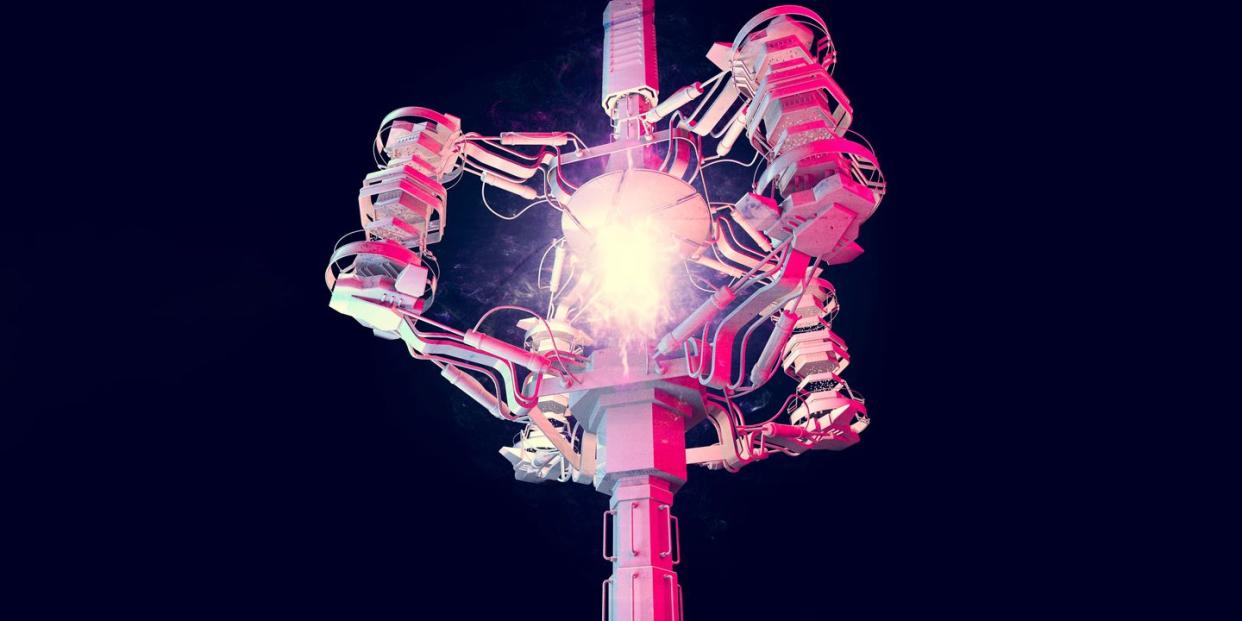The Direct Fusion Drive That Could Get Us to Saturn's Moon in Under 2 Years

"Hearst Magazines and Yahoo may earn commission or revenue on some items through these links."
The solar system is a big place, which makes exploring it a time-consuming process.
NASA’s upcoming Dragonfly mission will take seven years to travel to Saturn’s moon, Titan, but proponents of Direct Fusion Drive (DFD) propulsion system say that they could cut that time down to less than two years.
Nuclear engines, whether powered by fission or fusion, could be our best (and possibly only) hope of cutting down space transit times.
One of the most anticipated NASA missions to the outer solar system is the Dragonfly mission. Slated for launch in June 2027, the mission will explore Saturn’s moon Titan—one of the only moons in the solar system with any discernible atmosphere, a liquid cycle that mimics the one on Earth (albeit with methane), and just our all-around favorite moon. Similar to the Mars helicopter Ingenuity, but even more advanced, Dragonfly will send a mobile lander with 8 rotors capable of hopping around the moon’s surface.
Sounds cool, right? Sadly, it’ll take a full seven years for Dragonfly to finally arrive at Titan in 2034, but scientists from Princeton Satellite Systems (PSS) and other universities and aeronautical institutions say that there could be a speedier, more efficient way to get from Earth’s Point A to Titan’s Point B—a direct fusion drive (DFD).
A new paper published last month in the journal Acta Astronautica argues that a fusion-powered drive, capable of delivering propulsion while powering onboard electronics, could be a way to get more power and cargo to outer moons like Titan, and designed a scenario revealing what a DFD-powered Titan mission would look like.
A 2021 study from an international research team revealed that a DFD could transport 2,220 lbs to Titan in 31 months. Right now, the Dragonfly mission weighs in at about 990 lbs. This new paper says that the Princeton Field-Reversed Configuration (PFRC) concept developed at Princeton Plasma Physics Laboratory is essential for powering the mission.
The fusion employed in this drive isn’t exactly like the fusion that’ll power the fusion reactors on Earth (for one, it uses a novel radio frequency heating mechanism), but at its core it uses the same physics that power our Sun. Another bonus? It uses hydrogen as fuel, which happens to be one of the most abundant elements in the universe. Two years ago, scientists exploring this fusion drive described the technology as such:
In this DFD the propellant is first ionized, then it enters a region with a strong, externally-imposed, magnetic field. Here, the propellant flows around the engine’s core, inside which nuclear fusion reaction occurs and its products heat up the propellant. Then, the hot propellant expands into a magnetic nozzle, producing thrust.

In addition to getting a spacecraft to Titan in less than two years, according to this new paper, the craft could gain access to huge amounts of power by using a second fusion reactor to create a “close-loop electrical power generator.” That would also greatly extend Dragonfly’s current three-year mission parameters.
Although fusion may still have a ways to go before its packed onto a NASA spacecraft, nuclear power is already promising to be vital for the future of human space exploration. For example, a Nuclear Thermal Propulsion system—a fission system that could ferry cargo to Mars in just 45 days (instead of 8 months)—just entered Phase 1 development as part as part of the NASA Innovative Advanced Concepts program.
Turns out nuclear could very well be the future—at home and abroad.
You Might Also Like
